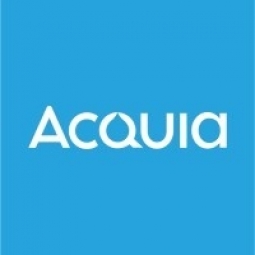Technology Category
- Application Infrastructure & Middleware - Data Exchange & Integration
- Functional Applications - Enterprise Asset Management Systems (EAM)
Applicable Industries
- E-Commerce
- Equipment & Machinery
Applicable Functions
- Sales & Marketing
Use Cases
- Asset Health Management (AHM)
- Asset Lifecycle Management
Services
- System Integration
About The Customer
HARMAN is a global company that designs and engineers connected products and solutions for various sectors. Their offerings include car systems, audio and visual products, enterprise automation solutions, and services for automakers, consumers, and enterprises worldwide. They have a wide range of internal teams and external partners who need access to brand and product content to market or sell HARMAN products. With business units and distributors expanding across the globe, the company needed a centralized and scalable solution to manage and share their brand and product content.
The Challenge
HARMAN, a global company that designs and engineers connected products and solutions, was facing a significant challenge in managing and sharing their brand and product content. Their content was scattered across various tools such as FTP, Dropbox, network drives, WeTransfer, and more, making it difficult to locate approved and current content. The growth of their e-commerce business necessitated a more structured and streamlined content distribution process. Furthermore, with business units and distributors expanding globally, providing stakeholders with the right assets at the right time became increasingly challenging, especially when multiple products were launched simultaneously.
The Solution
To address these challenges, HARMAN sought a more efficient, automated, and scalable software solution for managing and sharing their brand content. They turned to an integrated approach to digital asset management (DAM) and product information management (PIM) technology, which led them to select Acquia DAM. With the integration between their PIM and DAM solutions, HARMAN developed a workflow using metadata fields and embed codes to streamline how content is published to their website. When an asset is added to the DAM system, it is assigned a product ID that associates it with a product in the PIM system. If an asset on their website is updated in the DAM system, the most current version of that file is automatically published online. This integration facilitates a seamless flow between Acquia DAM, their separate PIM system, and their website, with the DAM solution serving as the single source of truth for all of HARMAN’s assets.
Operational Impact

Case Study missing?
Start adding your own!
Register with your work email and create a new case study profile for your business.
Related Case Studies.

Case Study
Smart Water Filtration Systems
Before working with Ayla Networks, Ozner was already using cloud connectivity to identify and solve water-filtration system malfunctions as well as to monitor filter cartridges for replacements.But, in June 2015, Ozner executives talked with Ayla about how the company might further improve its water systems with IoT technology. They liked what they heard from Ayla, but the executives needed to be sure that Ayla’s Agile IoT Platform provided the security and reliability Ozner required.

Case Study
IoT enabled Fleet Management with MindSphere
In view of growing competition, Gämmerler had a strong need to remain competitive via process optimization, reliability and gentle handling of printed products, even at highest press speeds. In addition, a digitalization initiative also included developing a key differentiation via data-driven services offers.

Case Study
Predictive Maintenance for Industrial Chillers
For global leaders in the industrial chiller manufacturing, reliability of the entire production process is of the utmost importance. Chillers are refrigeration systems that produce ice water to provide cooling for a process or industrial application. One of those leaders sought a way to respond to asset performance issues, even before they occur. The intelligence to guarantee maximum reliability of cooling devices is embedded (pre-alarming). A pre-alarming phase means that the cooling device still works, but symptoms may appear, telling manufacturers that a failure is likely to occur in the near future. Chillers who are not internet connected at that moment, provide little insight in this pre-alarming phase.

Case Study
Premium Appliance Producer Innovates with Internet of Everything
Sub-Zero faced the largest product launch in the company’s history:It wanted to launch 60 new products as scheduled while simultaneously opening a new “greenfield” production facility, yet still adhering to stringent quality requirements and manage issues from new supply-chain partners. A the same time, it wanted to increase staff productivity time and collaboration while reducing travel and costs.

Case Study
Integration of PLC with IoT for Bosch Rexroth
The application arises from the need to monitor and anticipate the problems of one or more machines managed by a PLC. These problems, often resulting from the accumulation over time of small discrepancies, require, when they occur, ex post technical operations maintenance.

Case Study
Data Gathering Solution for Joy Global
Joy Global's existing business processes required customers to work through an unstable legacy system to collect mass volumes of data. With inadequate processes and tools, field level analytics were not sufficient to properly inform business decisions.







